Medical name for mad cow disease. Variant Creutzfeldt-Jakob Disease (vCJD): Symptoms, Causes and Treatments
What are the symptoms of variant Creutzfeldt-Jakob disease. What causes vCJD and how is it related to mad cow disease. How is variant Creutzfeldt-Jakob disease diagnosed and treated. What are the key differences between vCJD and other forms of CJD.
Understanding Variant Creutzfeldt-Jakob Disease (vCJD)
Variant Creutzfeldt-Jakob disease (vCJD) is a rare and fatal neurodegenerative disorder that affects the brain and nervous system. It is considered the human form of bovine spongiform encephalopathy (BSE), more commonly known as “mad cow disease”. vCJD belongs to a family of diseases called transmissible spongiform encephalopathies (TSEs) or prion diseases.
Prion diseases are caused by abnormally folded proteins called prions. In vCJD, these misfolded prions accumulate in the brain, leading to progressive brain damage and eventual death. Unlike other forms of Creutzfeldt-Jakob disease (CJD), vCJD typically affects younger individuals and has a longer disease course.

Key Characteristics of vCJD
- Rare neurological disorder
- Linked to consumption of BSE-contaminated beef products
- Caused by abnormal prion proteins
- Fatal with no known cure
- Primarily affects younger individuals
Symptoms and Progression of Variant Creutzfeldt-Jakob Disease
The symptoms of vCJD typically develop gradually over time and can vary from person to person. Early signs are often subtle and may be mistaken for other neurological or psychiatric conditions. As the disease progresses, symptoms become more severe and debilitating.
Early Symptoms of vCJD
- Depression and anxiety
- Persistent pain or odd sensations
- Memory problems
- Difficulty concentrating
- Behavioral changes
Later Symptoms of vCJD
- Progressive cognitive decline
- Involuntary movements
- Loss of coordination
- Visual disturbances
- Hallucinations
- Difficulty speaking and swallowing
- Eventual coma
The progression of vCJD is typically slower than other forms of CJD, with an average duration of 14 months from the onset of symptoms to death. However, the disease is invariably fatal, with most patients succumbing within two years of symptom onset.
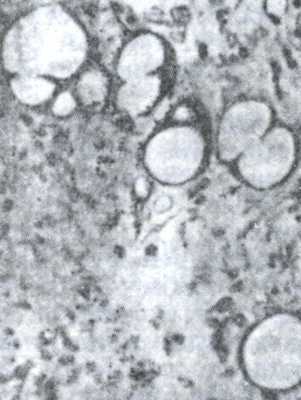
Causes and Transmission of Variant Creutzfeldt-Jakob Disease
Variant Creutzfeldt-Jakob disease is primarily caused by exposure to the bovine spongiform encephalopathy (BSE) agent, most likely through the consumption of contaminated beef products. BSE is a prion disease that affects cattle, causing a spongy degeneration of their brains and spinal cords.
The link between vCJD and BSE was first established in the mid-1990s following an outbreak of BSE in the United Kingdom. It is believed that the consumption of beef products from BSE-infected cattle led to the transmission of the disease to humans, resulting in vCJD cases.
Transmission Routes of vCJD
- Consumption of BSE-contaminated beef products
- Blood transfusions from infected individuals (rare)
- Use of contaminated surgical instruments (theoretical risk)
It’s important to note that vCJD cannot be transmitted through normal day-to-day contact with infected individuals. The risk of acquiring vCJD through dietary exposure has been significantly reduced due to strict regulations on beef production and processing implemented since the BSE outbreak.

Diagnosis and Detection of Variant Creutzfeldt-Jakob Disease
Diagnosing vCJD can be challenging, especially in its early stages, as symptoms may mimic other neurological disorders. A definitive diagnosis often requires a combination of clinical evaluation, diagnostic tests, and in some cases, post-mortem examination of brain tissue.
Diagnostic Approaches for vCJD
- Neurological examination
- Magnetic Resonance Imaging (MRI)
- Electroencephalogram (EEG)
- Cerebrospinal fluid (CSF) analysis
- Tonsil biopsy
- Genetic testing
MRI scans often show characteristic changes in the brain, particularly in an area called the pulvinar, which can help distinguish vCJD from other forms of CJD. The “pulvinar sign” is considered a highly specific indicator of vCJD.
While a definitive diagnosis typically requires examination of brain tissue, advancements in diagnostic techniques have improved the ability to detect vCJD before death. The real-time quaking-induced conversion (RT-QuIC) assay, which can detect minute amounts of abnormal prion proteins in cerebrospinal fluid or other tissues, has shown promise in diagnosing prion diseases, including vCJD.

Treatment Options and Management of Variant Creutzfeldt-Jakob Disease
Currently, there is no cure for variant Creutzfeldt-Jakob disease. Treatment primarily focuses on managing symptoms and providing supportive care to improve the quality of life for patients. As the disease progresses, patients typically require increasing levels of care and support.
Supportive Care Measures for vCJD Patients
- Medications to alleviate symptoms (e.g., antidepressants, anti-epileptic drugs)
- Physical therapy to maintain mobility
- Occupational therapy to assist with daily activities
- Speech therapy for communication difficulties
- Nutritional support
- Palliative care in advanced stages
Research into potential treatments for vCJD and other prion diseases is ongoing. Some experimental approaches being investigated include:
- Immunotherapies to target abnormal prion proteins
- Small molecule compounds to prevent prion replication
- Gene therapies to silence prion protein expression
- Stem cell therapies to regenerate damaged brain tissue
While these potential treatments show promise in laboratory studies, their effectiveness in humans has yet to be proven. Clinical trials for prion disease treatments face significant challenges due to the rarity and rapid progression of these disorders.

Prevention Strategies for Variant Creutzfeldt-Jakob Disease
Preventing vCJD primarily involves measures to reduce exposure to the BSE agent and minimize the risk of human-to-human transmission. Following the BSE outbreak, numerous regulations and guidelines have been implemented worldwide to protect public health.
Key Prevention Measures for vCJD
- Strict regulations on animal feed and slaughter practices
- Removal of specified risk materials (SRMs) from the food chain
- Enhanced surveillance for BSE in cattle populations
- Restrictions on blood donations from individuals at risk
- Improved sterilization procedures for surgical instruments
These measures have been largely successful in reducing the incidence of both BSE and vCJD. However, due to the long incubation period of vCJD, continued vigilance and monitoring are essential to prevent future outbreaks.
Global Impact and Epidemiology of Variant Creutzfeldt-Jakob Disease
The emergence of vCJD in the mid-1990s had significant global implications, affecting public health policies, international trade, and the beef industry. While the number of vCJD cases has been relatively low compared to initial fears, the disease has had a lasting impact on food safety regulations and prion disease research.
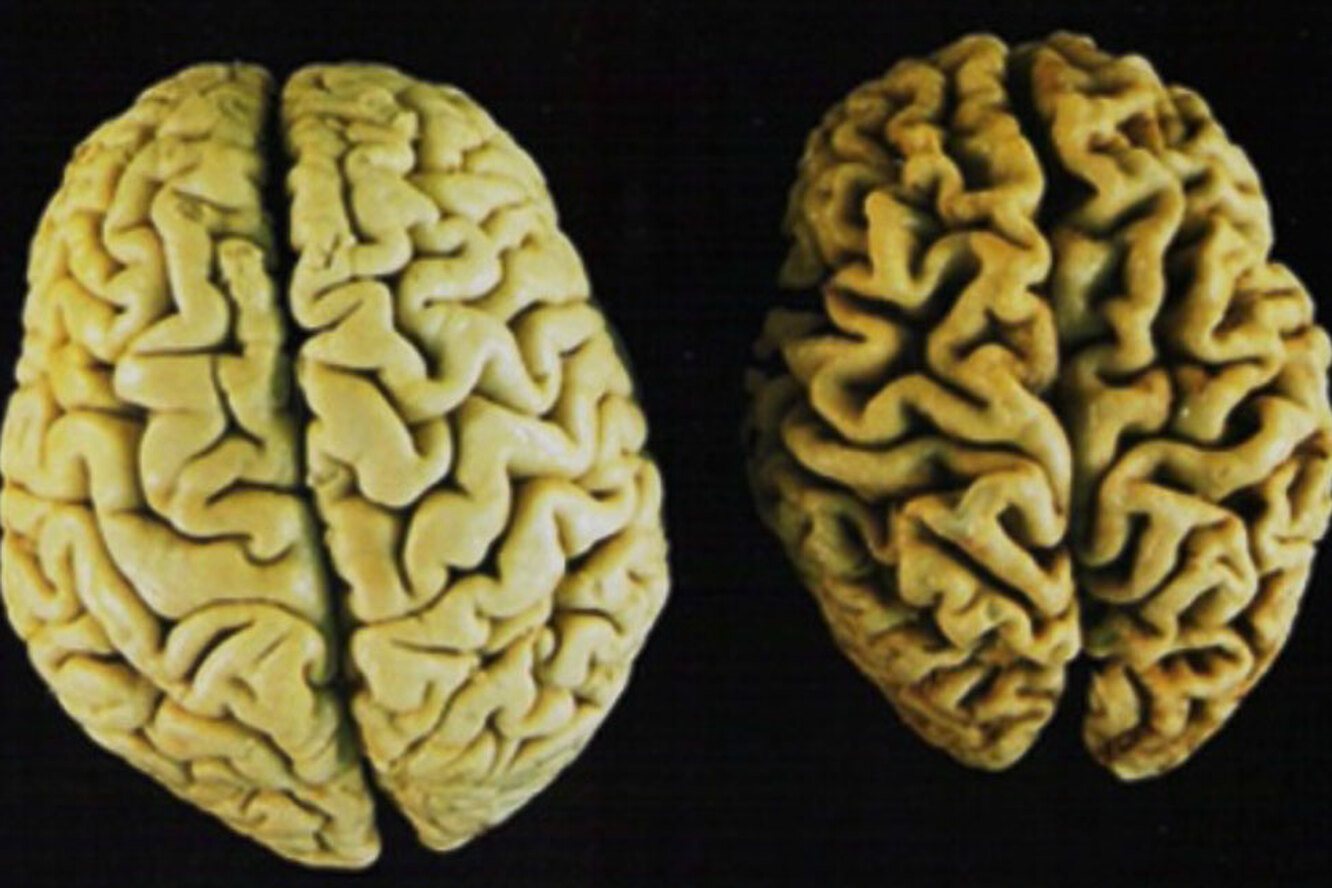
vCJD Case Distribution
- Majority of cases reported in the United Kingdom
- Sporadic cases in other countries, often linked to UK residence or travel
- Declining incidence since peak in early 2000s
The total number of confirmed and probable vCJD cases worldwide is less than 250, with over 175 of these occurring in the UK. The relatively low number of cases, despite widespread exposure to BSE-contaminated beef in the UK, suggests that there may be genetic or other factors influencing susceptibility to vCJD.
Ongoing surveillance and research continue to monitor for any potential new cases or variants of the disease. The experience with vCJD has also led to increased awareness and preparedness for other potential zoonotic diseases and emerging infectious threats.
Future Outlook and Research Directions for Variant Creutzfeldt-Jakob Disease
While the incidence of vCJD has declined significantly since its peak, the disease remains a subject of intense scientific interest. Ongoing research aims to better understand the mechanisms of prion diseases, develop more effective diagnostic tools, and explore potential therapeutic interventions.
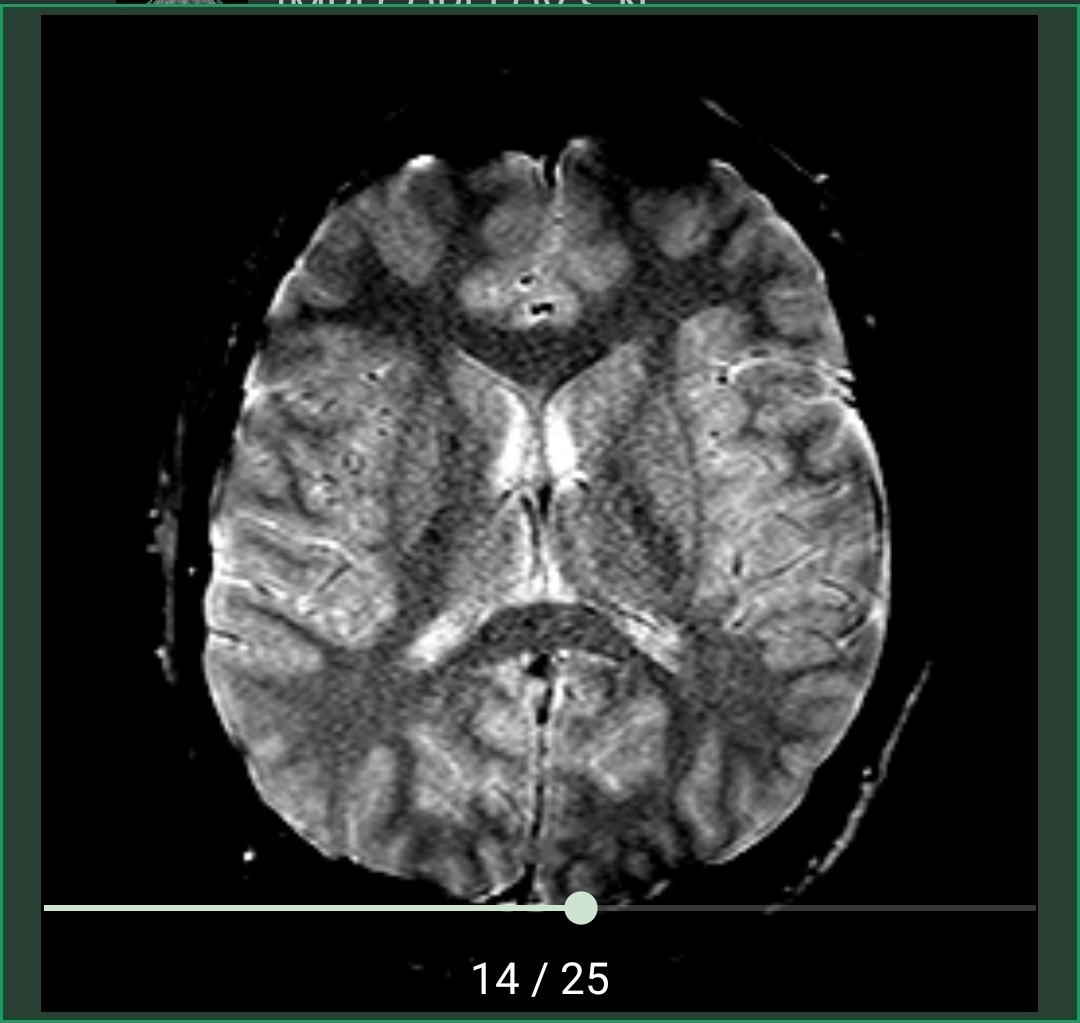
Key Areas of vCJD Research
- Prion protein biology and pathogenesis
- Improved diagnostic techniques, including blood-based tests
- Novel therapeutic approaches targeting prion proteins
- Long-term epidemiological studies
- Investigation of potential subclinical carriers
Advancements in fields such as genomics, proteomics, and structural biology are providing new insights into prion diseases. These developments may eventually lead to breakthroughs in early detection, treatment, or even prevention of vCJD and related disorders.
The lessons learned from the vCJD outbreak have also informed broader discussions on food safety, zoonotic disease surveillance, and the importance of the “One Health” approach, which recognizes the interconnectedness of human, animal, and environmental health.
Challenges and Opportunities in vCJD Research
- Rarity of the disease limits clinical studies
- Long incubation periods complicate epidemiological research
- Ethical considerations in experimental therapies
- Need for improved animal models
- Potential for applying prion research to other neurodegenerative disorders
As our understanding of prion diseases continues to evolve, there is hope that the knowledge gained from studying vCJD will contribute to advancements in treating other protein misfolding disorders, such as Alzheimer’s and Parkinson’s diseases. The collaborative efforts of researchers, clinicians, and public health officials worldwide remain crucial in addressing the ongoing challenges posed by vCJD and related prion diseases.
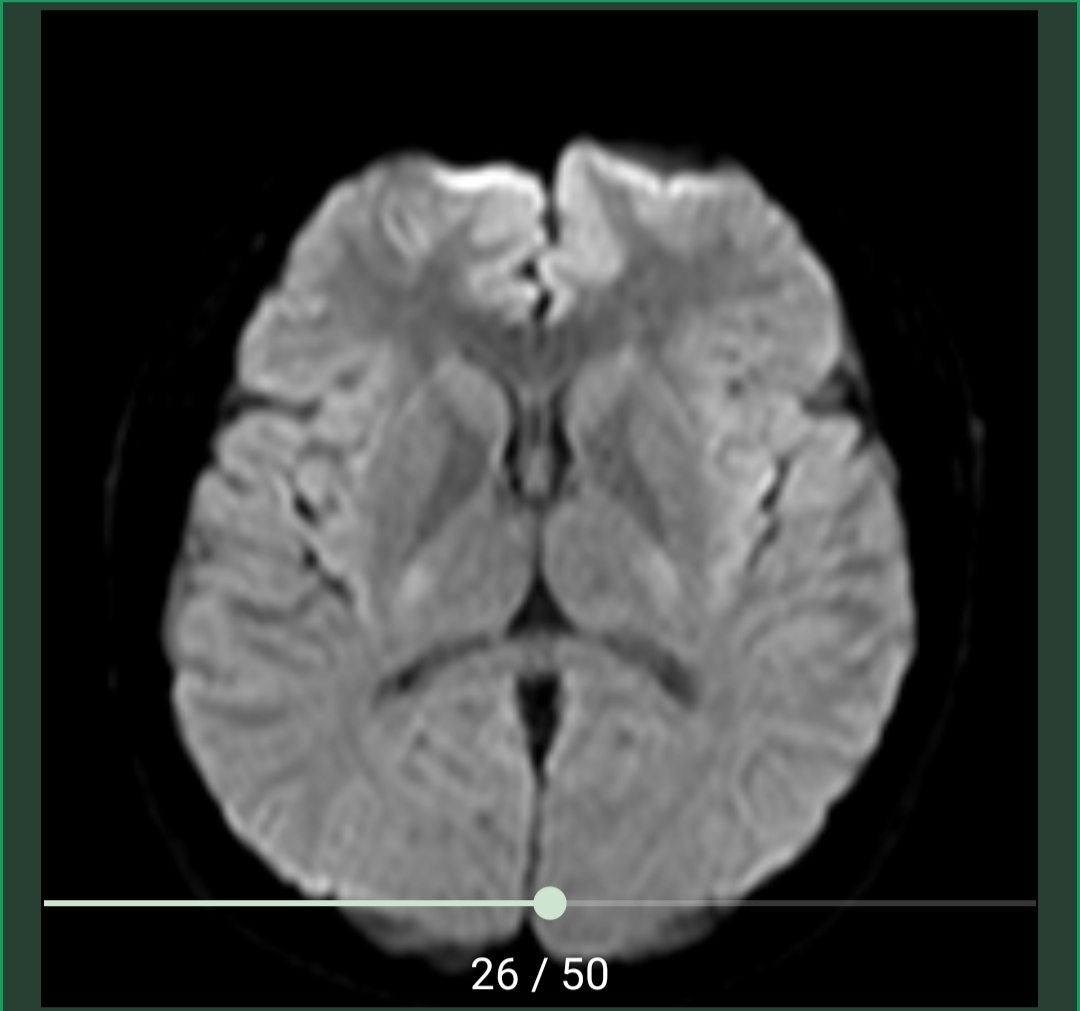
mad cow disease in German
mad cow disease
noun
Translations of mad cow disease
in Chinese (Traditional)
瘋牛病(BSE 的另一種說法)…
See more
in Chinese (Simplified)
疯牛病(BSE 的另一种说法)…
See more
in Spanish
enfermedad de las vacas locas…
See more
in Portuguese
doença da vaca louca…
See more
in more languages
in French
in Turkish
in Czech
in Danish
in Indonesian
in Thai
in Vietnamese
in Polish
in Malay
in Norwegian
in Ukrainian
in Italian
maladie de la vache folle…
See more
deli dana hastalığı…
See more
nemoc šílených krav…
See more
kogalskab, kvægsygdommen BSE…
See more
penyakit sapi gila…
See more
โรควัวบ้า…
See more
bệnh bò điên…
See more
choroba wściekłych krów…
See more
penyakit lembu gila…
See more
kugalskap…
See more
коров’ячий сказ…
See more
(morbo della mucca pazza)…
See more
Need a translator?
Get a quick, free translation!
See the definition of mad cow disease in the English dictionary
Browse
macramé
macro
macroscopic
mad
mad cow disease
madam
madden
maddening
maddeningly
Test your vocabulary with our fun image quizzes
- {{randomImageQuizHook.
 copyright1}}
copyright1}} - {{randomImageQuizHook.copyright2}}
Image credits
Try a quiz now
Word of the Day
carry the ball
in American football, to get more yards (= distance on the field) for your team by moving forward while holding the ball
About this
Blog
Having second thoughts (Changing our minds, Part 2)
Read More
New Words
super-smeller
More new words
bovine spongiform encephalopathy – Wiktionary
Definition from Wiktionary, the free dictionary
Jump to navigationJump to search
Contents
- 1 English
- 1.
 1 Noun
1 Noun- 1.1.1 Synonyms
- 1.1.2 Hypernyms
- 1.1.3 Translations
- 1.
English[edit]
English Wikipedia has an article on:
bovine spongiform encephalopathy
Wikipedia
Noun[edit]
bovine spongiform encephalopathy (uncountable) (abbreviated as BSE)
- (medicine, neurology) A fatal, neurodegenerative disease of cattle, which is transmissible to humans through misshaped prion proteins, caused by eating infected tissues.
- The outbreaks of bovine spongiform encephalopathy (mad cow disease) have limited some traditional uses of cattle for food, for example the eating of brains or spinal cords.
Synonyms[edit]
- mad cow disease
- variant Creutzfeldt-Jakob disease
Hypernyms[edit]
- Creutzfeldt-Jakob disease
- transmissible spongiform encephalopathy
Translations[edit]
bovine spongiform encephalopathy
|
|
Болезнь Крейтцфельдта-Якоба – Симптомы и причины
Обзор
Болезнь Крейтцфельдта-Якоба (БКЯ) — дегенеративное заболевание головного мозга, которое приводит к деменции и, в конечном итоге, к смерти.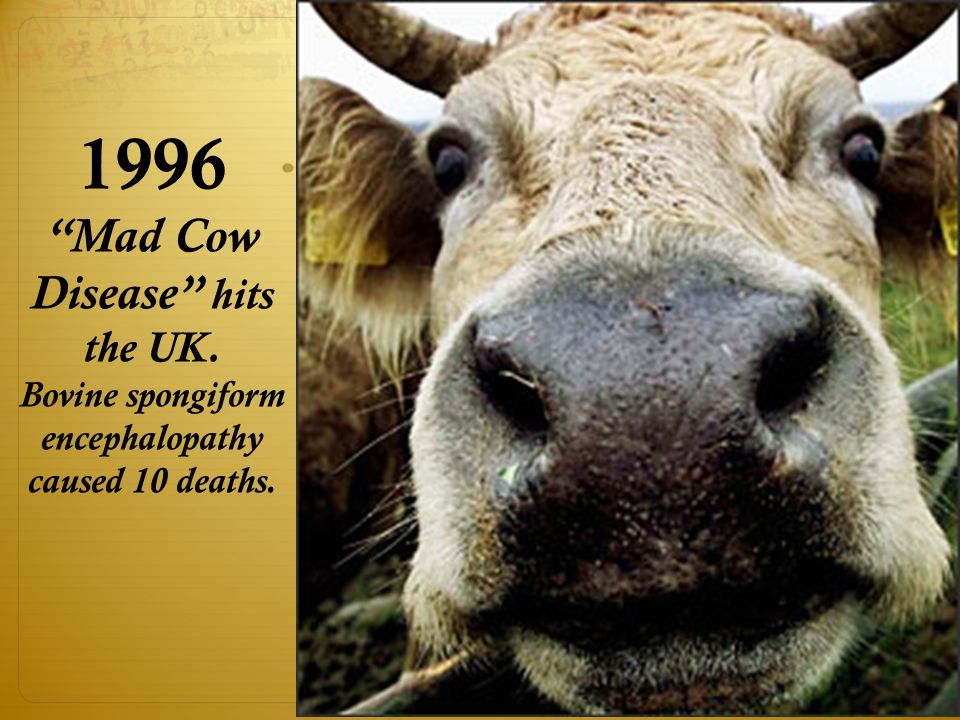 Симптомы болезни Крейтцфельдта-Якоба могут быть сходны с симптомами других заболеваний головного мозга, подобных деменции, таких как болезнь Альцгеймера. Но болезнь Крейтцфельдта-Якоба обычно прогрессирует гораздо быстрее.
Симптомы болезни Крейтцфельдта-Якоба могут быть сходны с симптомами других заболеваний головного мозга, подобных деменции, таких как болезнь Альцгеймера. Но болезнь Крейтцфельдта-Якоба обычно прогрессирует гораздо быстрее.
CJD привлек внимание общественности в 1990-х годах, когда у некоторых людей в Соединенном Королевстве развилась форма болезни — вариант CJD (vCJD) — после употребления в пищу мяса больного крупного рогатого скота. Однако «классическая» болезнь Крейтцфельдта-Якоба не была связана с зараженной говядиной. Все виды CJD серьезны, но очень редки. Во всем мире ежегодно диагностируется от одного до двух случаев CJD на миллион человек, чаще всего у пожилых людей.
Товары и услуги
- Книга: Книга семейного здоровья клиники Майо, 5-е издание
- Информационный бюллетень: Письмо о здоровье клиники Мэйо — электронное издание
Симптомы
месяцы. Ранние признаки и симптомы обычно включают:
Ранние признаки и симптомы обычно включают:
- Изменения личности
- Потеря памяти
- Нарушение мышления
- Затуманенное зрение или слепота
- Бессонница
- Несогласованность
- Трудно говорить
- Затрудненное глотание
- Внезапные, судорожные движения
По мере прогрессирования болезни психические симптомы ухудшаются. Большинство людей в конце концов впадают в кому. Сердечная недостаточность, легочная (дыхательная) недостаточность, пневмония или другие инфекции обычно являются причиной смерти, которая обычно наступает в течение года.
У людей с более редкой формой vCJD психиатрические симптомы вначале могут быть более очевидными. Во многих случаях деменция — потеря способности думать, рассуждать и запоминать — развивается позже в течение болезни. vCJD также поражает людей в более молодом возрасте и длится от 12 до 14 месяцев.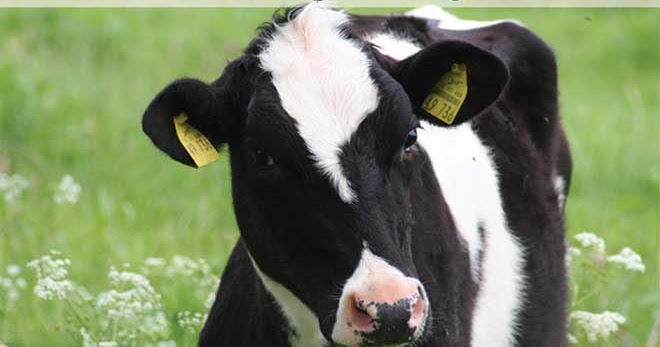
Записаться на прием в клинику Майо
Причины
Как складываются прионы
Как складываются прионы
Прионы — это белки, которые естественным образом встречаются в мозге животных и людей. Обычно белки безвредны, но когда они деформированы, они могут вызывать тяжелые заболевания, такие как коровья энцефалопатия у крупного рогатого скота и болезнь Крейтцфельдта-Якоба у людей.
Болезнь Крейтцфельдта-Якоба и ее варианты относятся к широкой группе болезней человека и животных, известных как трансмиссивные губкообразные энцефалопатии (ТГЭ). Название происходит от губчатых отверстий, видимых под микроскопом, которые развиваются в пораженной ткани головного мозга.
Причиной болезни Крейтцфельдта-Якоба и других ТГЭ , по-видимому, являются аномальные варианты белка, называемого прионом. Обычно эти белки вырабатываются в нашем организме и безвредны.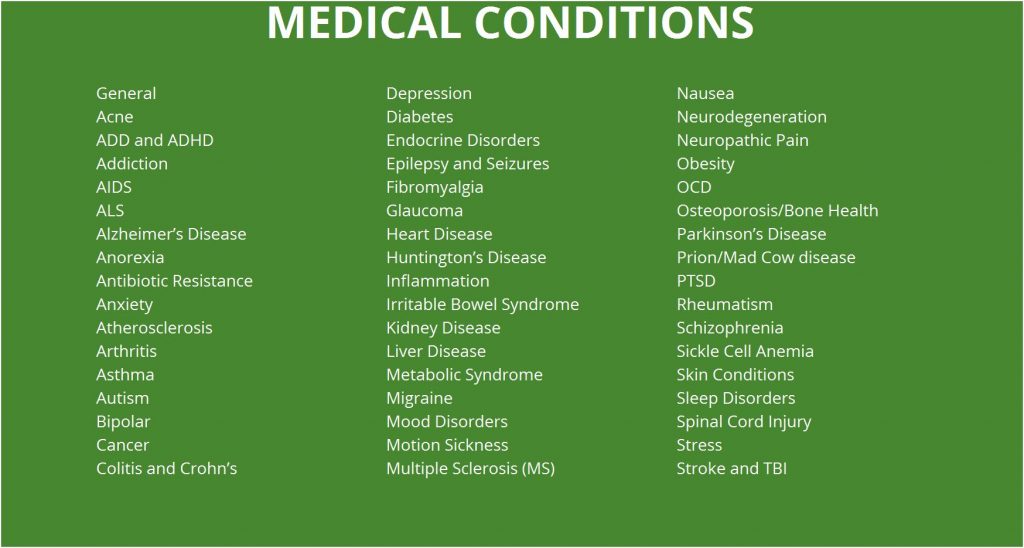 Но когда они деформированы, они становятся заразными и могут нанести вред нормальным биологическим процессам.
Но когда они деформированы, они становятся заразными и могут нанести вред нормальным биологическим процессам.
Как передается CJD
Риск CJD низкий. Болезнь не передается через кашель или чихание, прикосновение или половой контакт. CJD может развиваться тремя путями:
- Спорадически. У большинства людей с классическим CJD заболевание развивается без видимой причины. Этот тип, называемый спонтанным CJD или спорадическим CJD , составляет большинство случаев.
- По наследству. Менее 15% людей с CJD имеют семейный анамнез заболевания или положительный результат теста на генетическую мутацию, связанную с CJD .
 Этот тип называется семейным CJD .
Этот тип называется семейным CJD . По загрязнению. У небольшого числа людей развился CJD после контакта с инфицированными человеческими тканями во время медицинских процедур, таких как трансплантация роговицы или кожи. Кроме того, поскольку стандартные методы очистки не уничтожают аномальные прионы, несколько человек разработали CJD после операции на головном мозге с использованием загрязненных инструментов. У небольшого числа людей заболевание также развилось в результате употребления зараженной говядины.
Случаи CJD , связанные с медицинскими процедурами, называются ятрогенными CJD . Вариант CJD в первую очередь связан с употреблением в пищу говядины, зараженной коровьим бешенством (губчатая энцефалопатия крупного рогатого скота, или BSE).

Факторы риска
Аутосомно-доминантный тип наследования
Аутосомно-доминантный тип наследования
При аутосомно-доминантном заболевании измененный ген представляет собой доминантный ген, расположенный на одной из неполовых хромосом (аутосомах). Вам нужен только один измененный ген, чтобы быть затронутым этим типом расстройства. У человека с аутосомно-доминантным заболеванием — в данном случае у отца — есть 50-процентная вероятность рождения больного ребенка с одним измененным геном (доминантный ген) и 50-процентная вероятность рождения здорового ребенка с двумя типичными генами (рецессивные гены). ).
Большинство случаев болезни Крейтцфельдта-Якоба возникает по неизвестным причинам, и факторы риска не могут быть идентифицированы. Тем не менее, несколько факторов, по-видимому, связаны с различными видами возраста. Спорадический CJD имеет тенденцию развиваться в более позднем возрасте, обычно в возрасте около 60 лет. Начало семейного CJD происходит немного раньше, а vCJD поражает людей в гораздо более молодом возрасте, обычно в возрасте около 20 лет.
Начало семейного CJD происходит немного раньше, а vCJD поражает людей в гораздо более молодом возрасте, обычно в возрасте около 20 лет.
Контакт с зараженной тканью. Люди, получившие инфицированный искусственный гормон роста человека или перенесшие трансплантацию инфицированных тканей, покрывающих головной мозг (твердую мозговую оболочку), могут подвергаться риску ятрогенной CJD .
Риск заражения vCJD при употреблении зараженной говядины очень низок.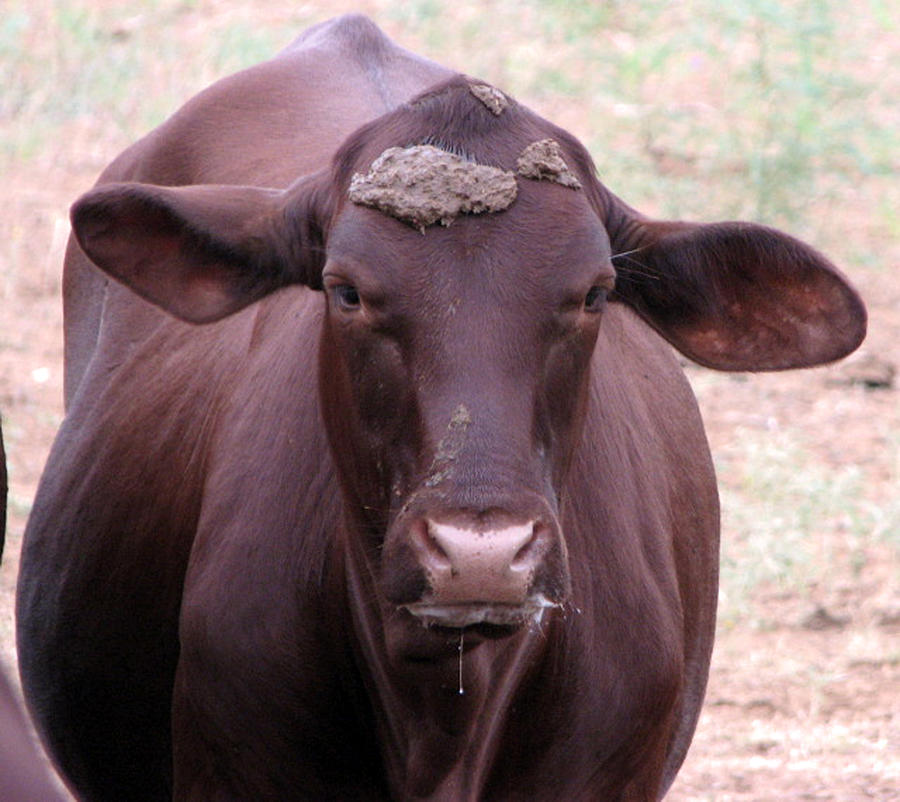 В целом, если страны эффективно реализуют меры общественного здравоохранения, риск практически отсутствует. Хроническая изнуряющая болезнь (ХИБ) — это прионовая болезнь, поражающая оленей, лосей, северных оленей и лосей. Он был обнаружен в некоторых районах Северной Америки. На сегодняшний день нет задокументированных случаев CWD , вызывающих заболевание у людей.
В целом, если страны эффективно реализуют меры общественного здравоохранения, риск практически отсутствует. Хроническая изнуряющая болезнь (ХИБ) — это прионовая болезнь, поражающая оленей, лосей, северных оленей и лосей. Он был обнаружен в некоторых районах Северной Америки. На сегодняшний день нет задокументированных случаев CWD , вызывающих заболевание у людей.
Осложнения
Болезнь Крейтцфельдта-Якоба сильно поражает мозг и тело. CJD обычно быстро прогрессирует. Со временем люди с CJD отдаляются от друзей и семьи и в конечном итоге теряют способность узнавать их или относиться к ним. Они также теряют способность заботиться о себе, и многие в конце концов впадают в кому. Болезнь всегда смертельна.
Профилактика
Неизвестно, как предотвратить спорадическую болезнь Крейтцфельдта-Якоба (БКЯ). Если у вас есть семейная история неврологических заболеваний, вам может быть полезно поговорить с консультантом по генетике.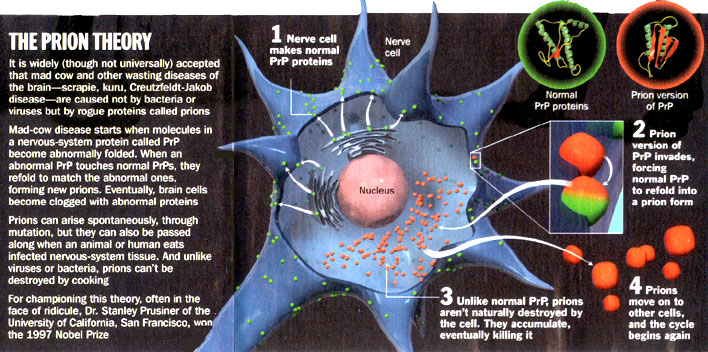 Он или она может помочь вам разобраться с рисками, связанными с вашей ситуацией.
Он или она может помочь вам разобраться с рисками, связанными с вашей ситуацией.
Предотвращение ятрогенной болезни CJD
Больницы и другие медицинские учреждения следуют четкой политике предотвращения ятрогенной болезни CJD . Эти меры включали:
- Исключительное использование искусственного гормона роста человека, а не гормона, полученного из гипофиза человека
- Уничтожение хирургических инструментов, используемых на головном мозге или нервной ткани человека с известным или подозреваемым заболеванием CJD
- Одноразовые наборы для спинномозговой пункции (люмбальной пункции)
В целях обеспечения безопасности поставок крови люди с риском заражения CJD или vCJD не имеют права сдавать кровь в Соединенных Штатах. Сюда входят люди, которые:
- имеют биологического родственника, у которого был диагностирован семейный CJD
- Получили трансплантат твердой мозговой оболочки головного мозга
- Получили трупный человеческий гормон роста
- Провел не менее трех месяцев в Соединенном Королевстве с 1980 до 1996
- Провел пять или более лет во Франции или Ирландии в период с 1980 по 2001 год
- Получил переливание крови в Великобритании, Франции или Ирландии с 1980 г.

В Великобритании, как и в некоторых других странах, также существуют определенные ограничения в отношении донорства крови от людей с риском заражения CJD или vCJD .
Профилактика vCJD
Риск заражения vCJD в США остается очень низким. В США зарегистрировано только четыре случая. По данным Центров США по контролю и профилактике заболеваний (CDC), убедительные доказательства свидетельствуют о том, что эти случаи были зарегистрированы в других странах за пределами США
В Соединенном Королевстве, где произошло большинство из случаев vCJD , было зарегистрировано менее 200 случаев. Заболеваемость CJD достигла пика в Великобритании в период с 1999 по 2000 год и с тех пор снижается. Очень небольшое количество других случаев vCJD также было зарегистрировано в других странах мира.
На сегодняшний день нет доказательств того, что люди могут заболеть vCJD в результате употребления в пищу мяса животных, инфицированных прионами CWD . Тем не менее, CDC рекомендует охотникам настоятельно рассмотреть возможность тестирования оленей и лосей перед употреблением в пищу мяса в районах, где известно присутствие CWD . Кроме того, охотникам следует избегать отстрела или обработки мяса оленей или лосей, которые выглядят больными или найдены мертвыми.
Регулирование потенциальных источников vCJD
Большинство стран предприняли шаги для предотвращения попадания тканей, инфицированных ГЭКРС, в продукты питания, в том числе:
- Жесткие ограничения на ввоз крупного рогатого скота из стран, где ГЭКРС распространена
- Ограничения на корма для животных
- Строгие процедуры обращения с больными животными
- Методы надзора и тестирования для отслеживания здоровья крупного рогатого скота
- Ограничения на переработку частей крупного рогатого скота в пищу
Опыт клиники Мэйо и истории пациентов
Наши пациенты говорят нам, что качество их взаимодействия, наше внимание к деталям и эффективность их посещений обеспечивают медицинское обслуживание, которого они никогда не испытывали. Посмотрите истории довольных пациентов клиники Майо.
Посмотрите истории довольных пациентов клиники Майо.
Вернувшись с пропасти и глядя вперед: Карен Детвейлер преодолевает редкое неврологическое расстройство
В феврале 2020 года, когда COVID-19 начал распространяться по миру, Карен Детвейлер из ДеЛанда, Флорида, и двое ее взрослых детей, Джонатан Детвейлер и Сьюзен Рив столкнулись со своим собственным кризисом: Карен Детвейлер ожидала смерти от неизлечимого неврологического расстройства. Летом 2019 года у Карен, профессора местного колледжа на пенсии и учителя английского языка, начались судороги.и быстро испортился. Во время телефонных разговоров со Сьюзан она рассказывала о своем дне и описывала занятия, которые…
Персонал клиники Мэйо
Связанные
Связанные процедуры
Товары и услуги
Коровье бешенство (губчатая энцефалопатия крупного рогатого скота)
крупный рогатый скот. Это связано с заболеванием у людей, называемым вариантом болезни Крейтцфельдта-Якоба (vCJD).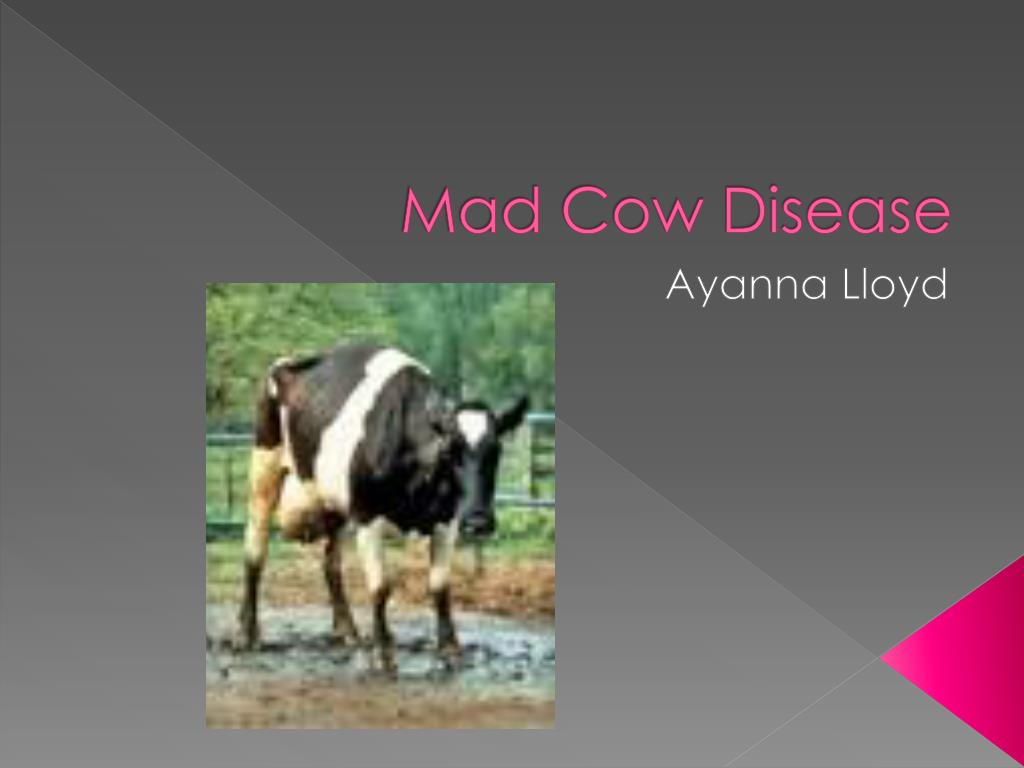 Оба расстройства являются универсальными смертельными заболеваниями головного мозга, вызванными прионом. Прион — это белковая частица, в которой отсутствует ДНК (нуклеиновая кислота). Считается, что это причина различных инфекционных заболеваний нервной системы. Употребление в пищу зараженных продуктов крупного рогатого скота, включая говядину, может вызвать у человека коровье бешенство.
Оба расстройства являются универсальными смертельными заболеваниями головного мозга, вызванными прионом. Прион — это белковая частица, в которой отсутствует ДНК (нуклеиновая кислота). Считается, что это причина различных инфекционных заболеваний нервной системы. Употребление в пищу зараженных продуктов крупного рогатого скота, включая говядину, может вызвать у человека коровье бешенство.
Что такое коровье бешенство?
Коровье бешенство — это прогрессирующее фатальное неврологическое заболевание крупного рогатого скота, возникающее в результате заражения прионом. По-видимому, это вызвано зараженным кормом для крупного рогатого скота, содержащим прионовый агент. Большинство случаев коровьего бешенства произошло у крупного рогатого скота в Соединенном Королевстве (Великобритания), несколько случаев были обнаружены у крупного рогатого скота в США в период с 2003 по 2006 год. Затем были ужесточены правила кормления.
В дополнение к случаям коровьего бешенства, зарегистрированным в Великобритании (78% всех случаев зарегистрированы там) и США, случаи также были зарегистрированы в других странах, включая Францию, Испанию, Нидерланды, Португалию, Ирландию, Италию, Япония, Саудовская Аравия и Канада. Во многих странах были приняты меры общественного здравоохранения для предотвращения попадания потенциально инфицированных тканей в пищевую цепь человека. Эти профилактические меры оказались эффективными. Например, Канада полагает, что ее профилактические меры к 2017 году уничтожат болезнь среди крупного рогатого скота9.0005
Во многих странах были приняты меры общественного здравоохранения для предотвращения попадания потенциально инфицированных тканей в пищевую цепь человека. Эти профилактические меры оказались эффективными. Например, Канада полагает, что ее профилактические меры к 2017 году уничтожат болезнь среди крупного рогатого скота9.0005
Что такое вариант болезни Крейтцфельдта-Якоба (vCJD)?
Болезнь Крейтцфельдта-Якоба (БКЯ) — редкое заболевание головного мозга со смертельным исходом. Он вызывает быстрое прогрессирующее слабоумие (ухудшение психических функций), а также связанные с ним нервно-мышечные расстройства. Болезнь, которая в чем-то напоминает коровье бешенство, традиционно поражала мужчин и женщин в возрасте от 50 до 75 лет. Однако вариантная форма поражает молодых людей (средний возраст начала — 28 лет) и имеет признаки, которые нетипичен по сравнению с БКЯ. Около 230 человек с вБКЯ были выявлены с 19 года.96. Большинство из Великобритании и других стран Европы. Это редко встречается в США, с 1996 г.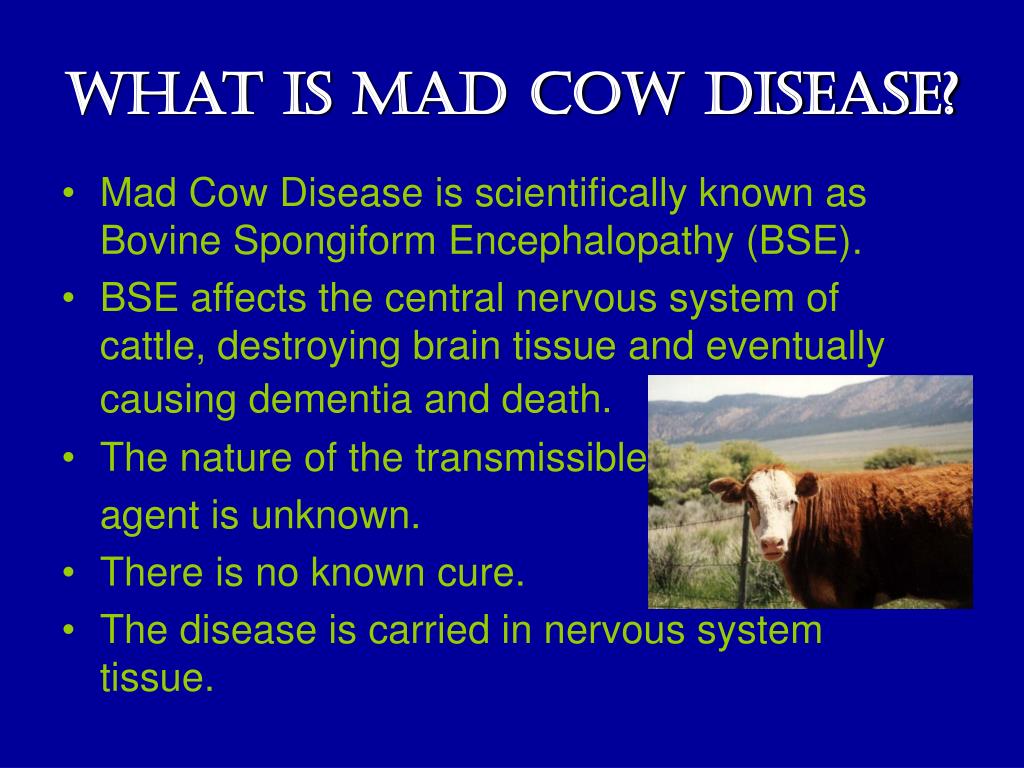

 copyright1}}
copyright1}} 1 Noun
1 Noun Этот тип называется семейным CJD .
Этот тип называется семейным CJD .
